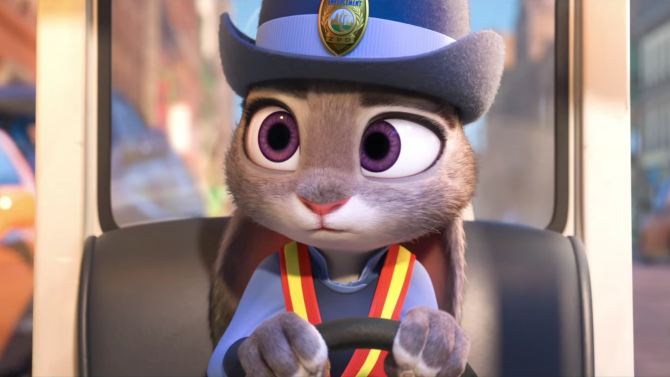[ad_1]

Judy Hopps from the film Zootopia
Disney screenshot
Last week Zootopia, the 55th animated Disney film, debuted in theaters to critical appraise and a huge box office. The previous 54 were mostly about either plucky young girls or talking animals, and Zootopia is no different in that regard, except this time it’s a plucky young girl who happens to be a talking animal.
And yet Zootopia is nothing like any Disney animated movie you’ve ever seen. This movie is what happens when the people who made Bambi and Dumbo team up with some conspiracy-minded Hoteps. Who knew the folks at Disney had it in them to make the most searing, complicated and subversive film about race, drugs and policy since Traffic … but with furry animals?
Spoiler alert: I’m giving away some key plot points about Zootopia, so if you haven’t seen it yet or just have a deep medical aversion to spoilers, stop reading now.
The story revolves around Judy Hopps (voiced by Ginnifer Goodwin), a rabbit from rural Bunnyburrow who dreams of one day becoming a police officer in the big city of Zootopia. The catch is, there has never been a rabbit on the police force. Because even though Zootopia prides itself on being a city where animals big and small, predator and prey, can all live in harmony, there’s still discrimination. Big animals like bison, elephants and hippos, along with predators like lions and tigers, are in the minority, but they get some of the best jobs and are considered stronger and “cooler.”
Zootopia makes it clear that terms like “predator,” “prey,” “black,” “white” and “Hispanic” are all pretty interchangeable when you’re talking about discrimination. Judy is discouraged from being a cop, and when she graduates at the top of her class at the police academy, Police Chief Bogo (voiced by Idris Elba) believes that she’s just a result of the Mammal Inclusion Initiative, a sort of affirmative action for the short and fluffy woodland creatures.
Throw in Mayor Leodore Lionheart (played by J.K. Simmons), who constantly obsesses about being a predator mayor in a city that’s 90 percent prey, and the various ways that the animals work together but hold on to stereotypes about foxes, sloths and rabbits, and the whole thing plays out like The Wire with webbed feet. The movie moves along in typical Disney fashion—a mystery, an unlikely friendship—but then suddenly, in the last act, it goes 100 percent COINTELPRO, diving deep into Hotep-level criticism of white supremacy and the drug trade. You never see it coming.
Judy and her partner, a sly fox named Nick Wilde (voiced by Jason Bateman), discover that there’s a drug being put on the street that causes predators to “go wild.” They become violent, smash up property and attack other animals like … animals. While the drug has the same effect on small prey animals as well, all of those deeply affected by the drugs are predators like panthers and otters (all of whom are voiced by black or Hispanic actors), and that plays into long-existing stereotypes in the prey community that predators are inherently violent and can’t be trusted.
As a result of this new drug epidemic, predators are denied jobs, demoted from positions of influence and treated like menaces to society. When Judy and Nick finally crack the case, what do they discover? The drugs were being pumped into the predator community by the assistant mayor, Dawn Bellwether, a white fuzzy sheep. The assistant mayor knew that if she could prejudice prey against the predator community by playing into existing stereotypes, the majority of animals would be easier to manipulate. No need to adjust your kufi. That is the actual plot.
It’s straight out of the realization that members of the CIA either wittingly or unwittingly helped introduce crack cocaine into minority communities in the 1970s and ’80s, even though the press and some political leaders denied it for years. The subsequent destruction of mostly black neighborhoods made it easier for white political leaders and pundits to dismiss African-American communities as filled with “crack babies,” “welfare queens” and “superpredators.” There can never be enough attention paid to this dark time in American history, even if it comes out of the mouths of furry animated creatures.
Is Zootopia perfect? Of course not. Some of its racial messages are muddled. For example, after establishing that being called “cute” in the rabbit community is the equivalent of saying “n–ger (something that rabbits can call one another but other animals can’t), Judy Hopp is casually referred to as “cute” by other animals throughout the film, with no further reflection. Replace that with “n–ger” and you’ve moved from Disney to an episode of Boondocks. But that’s a small price to pay for some conspiracy-level animation that owes more to The Isis Papers and Hidden Colors than it does the Mickey Mouse Club.
[ad_2]






















